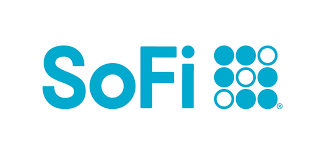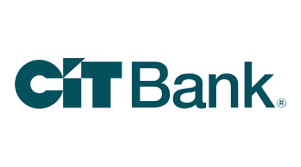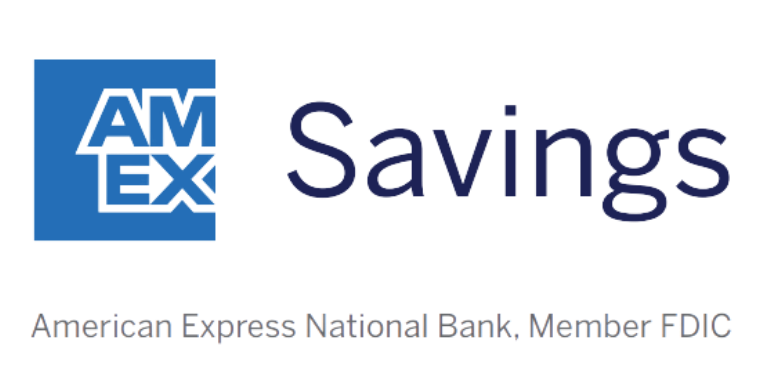Those new to banking -- or even some who have been at it a while -- may be surprised to learn that not all interest is bad. Unlike the interest fees you're charged for credit products, savings account interest works for you, earning you income on deposits.
Thanks to ongoing Federal Reserve rate hikes, interest rates are hitting recent highs. It's a good time to have money invested in a savings account.
And the best part is, some banks adjust their rates automatically, no work needed on your part. You may even be making more money from your deposits without realizing it -- but first, you’ll want to know what an interest rate is and why it matters.
What is savings account interest?
The interest on a savings account is the fee you earn for keeping your money in the bank. Why?
Banks use the collective money deposited by account holders to finance loans and other investments. Interest fees are paid to you by the bank as compensation for letting them use your deposits as capital for investments.
(Don't worry, the bank never uses all of its deposits; you can withdraw your money at any time.)
How much interest you earn on your money is determined by your savings account's interest rate. As such, one of the first things we should all ask when evaluating a savings account is, "What is my interest rate on my savings account?"
The very best savings accounts will offer a high interest rate that can help boost your savings. How much interest you earn will vary a lot depending on the bank and account type, so it's important to shop around for the best rates.
Compare savings rates
Make sure you're getting the best account for you by comparing savings rates and promotions. Here are some of our favorite high-yield savings accounts to consider.
| Account | APY | Promotion | Next Steps |
|---|---|---|---|

Open Account for SoFi Checking and Savings
On SoFi's Secure Website.
Rating image, 4.50 out of 5 stars.
4.50/5
Our ratings are based on a 5 star scale.
5 stars equals Best.
4 stars equals Excellent.
3 stars equals Good.
2 stars equals Fair.
1 star equals Poor.
We want your money to work harder for you. Which is why our ratings are biased toward offers that deliver versatility while cutting out-of-pocket costs.
|
up to 3.80%²
Rate info
You can earn the maximum APY by having Direct Deposit (no minimum amount required) or by making $5,000 or more in Qualifying Deposits every 30 days. See SoFi Checking and Savings rate sheet at: https://www.sofi.com/legal/banking-rate-sheet.
Min. to earn: $0
|
New customers can earn up to a $300 bonus with qualifying direct deposits!¹
|
Open Account for SoFi Checking and Savings
On SoFi's Secure Website. |

Open Account for CIT Platinum Savings
On CIT's Secure Website.
Rating image, 4.50 out of 5 stars.
4.50/5
Our ratings are based on a 5 star scale.
5 stars equals Best.
4 stars equals Excellent.
3 stars equals Good.
2 stars equals Fair.
1 star equals Poor.
We want your money to work harder for you. Which is why our ratings are biased toward offers that deliver versatility while cutting out-of-pocket costs.
|
4.10% APY for balances of $5,000 or more
Rate info
4.10% APY for balances of $5,000 or more; otherwise, 0.25% APY
Min. to earn: $100 to open account, $5,000+ for max APY
|
Earn a bonus of at least $225 after a one-time deposit of $25,000+.
Transfer a one-time deposit of $25,000-$49,999.99 for a bonus of $225. Transfer a one-time deposit of $50,000+ for a bonus of $300. Account must be opened with code PS2025 while this promotion lasts, and funded within 30 days. Bonus will be fulfilled within 60 days from the funding date. There is no period of time where the customer will be required to maintain the funds. Account must be open when bonus is credited. One bonus per account and primary customer. Bonus will be credited into the Platinum Savings Account that fulfills the funding requirement. Funding can be deposited all at once or incrementally.
|
Open Account for CIT Platinum Savings
On CIT's Secure Website. |

Open Account for American Express® High Yield Savings
On American Express's Secure Website.
Rating image, 4.00 out of 5 stars.
4.00/5
Our ratings are based on a 5 star scale.
5 stars equals Best.
4 stars equals Excellent.
3 stars equals Good.
2 stars equals Fair.
1 star equals Poor.
We want your money to work harder for you. Which is why our ratings are biased toward offers that deliver versatility while cutting out-of-pocket costs.
|
3.70%
Rate info
3.70% annual percentage yield as of April 12, 2025. Terms apply.
Min. to earn: $0
|
N/A
|
Open Account for American Express® High Yield Savings
On American Express's Secure Website. |
SoFi disclosure:
¹ New and existing Checking and Savings members who have not previously enrolled in Direct Deposit with SoFi are eligible to earn a cash bonus of either $50 (with at least $1,000 total Direct Deposits received during the Direct Deposit Bonus Period) OR $300 (with at least $5,000 total Direct Deposits received during the Direct Deposit Bonus Period). Cash bonus will be based on the total amount of Direct Deposit. Direct Deposit Promotion begins on 12/7/2023 and will be available through 1/31/26. See full bonus and annual percentage yield (APY) terms at sofi.com/banking#1.
² SoFi members who enroll in SoFi Plus with Direct Deposit or by paying the SoFi Plus Subscription Fee every 30 days or with $5,000 or more in Qualifying Deposits during the 30-Day Evaluation Period can earn 3.80% annual percentage yield (APY) on savings balances (including Vaults) and 0.50% APY on checking balances. There is no minimum Direct Deposit amount required to qualify for the stated interest rate. Members without either SoFi Plus or Qualifying Deposits, during the 30-Day Evaluation Period will earn 1.00% APY on savings balances (including Vaults) and 0.50% APY on checking balances. Only SoFi Plus members are eligible for other SoFi Plus benefits. Interest rates are variable and subject to change at any time. These rates are current as of 1/24/25. There is no minimum balance requirement. Additional information can be found at http://www.sofi.com/legal/banking-rate-sheet. See the SoFi Plus Terms and Conditions at https://www.sofi.com/terms-of-use/#plus.
³ We do not charge any account, service or maintenance fees for SoFi Checking and Savings. We do charge a transaction fee to process each outgoing wire transfer. SoFi does not charge a fee for incoming wire transfers, however the sending bank may charge a fee. Our fee policy is subject to change at any time. See the SoFi Checking & Savings Fee Sheet for details at sofi.com/legal/banking-fees/.
⁴ SoFi Bank is a member FDIC and does not provide more than $250,000 of FDIC insurance per depositor per legal category of account ownership, as described in the FDIC’s regulations.
Any additional FDIC insurance is provided by the SoFi Insured Deposit Program. Deposits may be insured up to $3M through participation in the program. See full terms at SoFi.com/banking/fdic/sidpterms. See list of participating banks at SoFi.com/banking/fdic/participatingbanks.
⁵ We’ve partnered with Allpoint to provide you with ATM access at any of the 55,000+ ATMs within the Allpoint network. You will not be charged a fee when using an in-network ATM, however, third-party fees incurred when using out-of-network ATMs are not subject to reimbursement. SoFi’s ATM policies are subject to change at our discretion at any time.
⁶ Early access to direct deposit funds is based on the timing in which we receive notice of impending payment from the Federal Reserve, which is typically up to two days before the scheduled payment date, but may vary.
⁷ Overdraft Coverage is limited to $50 on debit card purchases only and is an account benefit available to customers with direct deposits of $1,000 or more during the current 30-day Evaluation Period as determined by SoFi Bank, N.A. The 30-Day Evaluation Period refers to the “Start Date” and “End Date” set forth on the APY Details page of your account, which comprises a period of 30 calendar days (the“30-Day Evaluation Period”). You can access the APY Details page at any time by logging into your SoFi account on the SoFi mobile app or SoFi website and selecting either (i) Banking > Savings > Current APY or (ii) Banking > Checking > Current APY. Members with a prior history of non-repayment of negative balances are ineligible for Overdraft Coverage.
Where to find your savings account interest rate
The simplest way to find your current savings account interest rate is online:
- Log into your online banking account through a web browser or the bank's mobile app.
- Select the account you want more information about.
- Look for a section that says "account details" or similar.
- Scroll until you find your interest rate
Along with your interest rate, most banks will list how much interest you've earned so far this year.
If you can't find your rate online or in the app, you can ask your bank directly. You can ask a bank’s chatbot, call the customer service line, or head into a local branch. Your rate may also be listed in any documents you received when you first opened your account.
How to find the interest rate on a new account
It's a good idea to compare interest rates when shopping for a new savings account. In this case, the best place to find the interest rate is likely the bank's website.
Some banks will have one page that compares all of their savings products. Other banks will have a dedicated page for each type of savings account.
Savings account interest rates can vary depending on your location. So, you may need to provide your ZIP code to see the potential interest rate on a new account.
Interest rate vs. APY
The interest rate on your savings account may be listed as an APY, rather than an interest rate. APY stands for "annual percentage yield." The APY is how much interest you can expect to earn over one year. An APY is based on two things: the interest rate and how often the interest is compounded.
Learn more: APR vs. Interest Rate
Savings account interest can be paid out daily, monthly, quarterly, or yearly. The amount of interest earned is calculated at the time it is paid out based on the total balance of your account. This includes both your initial deposit -- the principal -- plus any interest you've earned so far.
TIP
Compound interest is when you earn interest on both your principal and the interest you've already earned to date. How often an account pays interest is how often it compounds.
For example, a savings account with an interest rate that compounds monthly will pay you interest once a month. Each time the interest pays out, you earn income based on how much money you have in the account. So, you'll earn interest on all the money you have deposited, which includes the interest you already earned on your deposit last month, and the month before, and so on.
What is the average interest rate for a savings account?
According to the Federal Deposit Insurance Corporation (FDIC), the current average interest rate for savings accounts is 0.41%. Yes, less than a single percentage point. Believe it or not, that's almost five times higher than it was a year ago.
What is a good interest rate on my savings account?
While the average rate is very low, the best savings accounts offer much higher interest rates. Thanks to recent Federal Reserve rate hikes, top-tier rates have skyrocketed. A good savings interest rate in today's market is 4% or higher. But an interest rate of 2% or more would still be considered competitive.
The type of bank and account you have will be the main factor in the interest rate you receive. For instance, online banks tend to offer higher interest rates. This is because online banks have lower overhead (the cost of running a business).
In some cases, how much money you deposit will influence your interest rate. Many banks offer higher-interest savings accounts that have large minimum deposit requirements. These accounts may also charge higher monthly fees, so be sure to check the fine print.
How to calculate savings account interest
It's one thing to know your savings account's interest rate, and another to turn that into a real dollar amount. That's because it's not as simple as multiplying your principal deposit by your interest rate. You have to take the compound interest into account.
Most savings accounts compound interest monthly. So, you need to calculate the interest based on the new balance each month. Here's an example of how much interest you could earn on a $10,000 deposit in one year, compounded monthly, with different interest rates:
| Interest Rate | Interest Earned |
|---|---|
| 0.1% | $10.00 |
| 0.5% | $50.11 |
| 1.0% | $100.46 |
| 1.5% | $151.04 |
| 3.0% | $304.16 |
| 5.0% | $511.62 |
You can find compound interest calculators for free online and in mobile app stores. Enter your principal, interest rate, and how often it compounds to see how much you'll earn over a given period of time. Compound interest calculators are a good way to see how a higher interest rate boosts your savings.
Many people are missing out on guaranteed returns as their money languishes in a big bank savings account earning next to no interest. Motley Fool Money's top savings account picks can earn you more than 10x the national average savings account rate.
FAQs
-
An easy way to find your savings account interest rate is through your online bank account.
Log in through a web browser or your bank's mobile app. Select the account you want and look for the "details" link or menu. (It may say "more details," or "account details," or something similar.) The interest rate should be listed in the account details.
-
The amount of interest you'll earn on $1,000 in one year depends on the interest rate and how often it compounds. Most savings accounts compound monthly. Here's what that would look like with a few different interest rates:
- $1,000 at a rate of 0.1% would earn $1.00
- $1,000 at a rate of 0.5% would earn $5.01
- $1,000 at a rate of 1% would earn $10.05
- $1,000 at a rate of 1.5% would earn $15.10
- $1,000 at a rate of 5% would earn $51.16
You can use a compound interest calculator to explore different rates and compound schedules.
We're firm believers in the Golden Rule, which is why editorial opinions are ours alone and have not been previously reviewed, approved, or endorsed by included advertisers. Motley Fool Money does not cover all offers on the market. Motley Fool Money is 100% owned and operated by The Motley Fool. Our knowledgeable team of personal finance editors and analysts are employed by The Motley Fool and held to the same set of publishing standards and editorial integrity while maintaining professional separation from the analysts and editors on other Motley Fool brands. Terms may apply to offers listed on this page. APYs are subject to change at any time without notice.